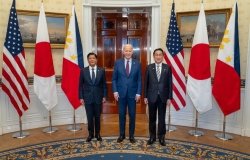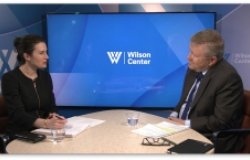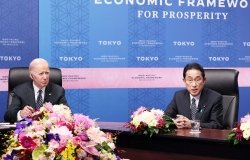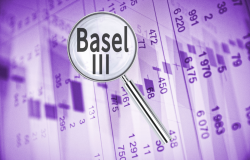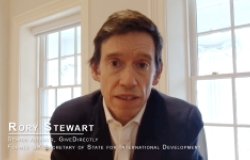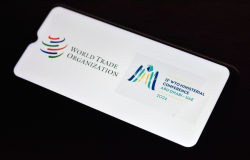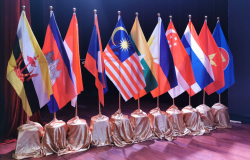Intra-Trade and Infrastructure: A Discussion with the Eastern Africa Diplomatic Community
Eastern Africa is a region with budding investment and development potential. Economic opportunities range from agriculture and tourism, to infrastructure, energy and minerals.
Overview
Steve McDonald, director of the Africa Program and the Project on Leadership and Building State Capacity, described this forum on East African intra-trade and infrastructure as a way to “bring together the world of ideas and the world of policy so that practitioners and experts …can come together and exchange and learn from each other.”
H.E. Perezi Kamunanwire, Regional Dean and Ugandan Ambassador to the United States, began the discussion by explaining how East African countries are diverse in terms of history, culture and colonial experience. To enable regional cooperation, the “task for the group… is to put together an economic community.” Officially revived in July 2000, the East African Community (EAC) is the realization of this goal. Stemming from this coalescence, the East African Common Market was created to incorporate all the factors of production and promote the free movement of people, goods, and services. The regional customs union aims to remove non-tariff barriers between member countries as well as to develop a series of normalized trade standards and external tariffs. Moreover, the monetary union is “one of the landmarks” along the journey towards making East Africa “more than what it currently is.” The Ambassador mentioned that “the protocol is now in place” to establish a regional currency and is slated to enter into force by April 2013. Finally, the development of a regional political federation is the most daunting task because it seeks “to end the exploitation and abuse of free East African labor” and combat neocolonialism. This political consortium seeks “to identify [and address] other economic and political challenges that face East Africa.”
Even though the EAC has encountered many obstacles, Ambassador Kamunanwire charged that “we can now start to see the impact of our integration,” as economic development and foreign direct investment have increased in the region. However, he remarked that there remained some outstanding infrastructural challenges. For instance, the continent needs to be joined through transportation systems. Also, the Ambassador emphasized that “East Africans are a hardworking, highly educated labor force” that should be kept in Africa and that there should be an independent public “education system that focuses on educating the seas of [youth]” in a variety of subject areas. According to Ambassador Kamunanwire, if the education system and the opportunities therein are not improved, “the brain drain of educated professionals will continue” and “our investment will be lost.”
How Regionalization Can Promote Development
The director of the Kenya Wildlife Services, Julius Kipng’etich, was optimistic in his assessment of Africa’s economic potential as he stressed, “the [African] population is young and innovative,” and that “there are many growing economies with low inflation” and “incredible” amounts of natural resources. Kipng’etich then shifted his gaze toward trade and regional integration. He reasoned that trade markets and practice in Africa were “overall pretty small since most people are [still] engaged in subsistence” agriculture. However, there is a great deal of income and manufacturing potential within the growing middle class and this represents a “strong, untapped market.” “East Africa must take trading blocs very seriously” and seize the initiative to build capacity and economic foundations throughout its member states. “East Africa and Africa in general must attract new investors” through the application of the rule of law, the institutionalization of property rights, the removal of corrupt government officials, and the settlement of internal disputes within the region. The relationships within and outside of the EAC “need to be mutually beneficial” and will be assured if a regional “capacity for negotiation” is fostered. Furthermore, “as the economies of Africa expand,” the people of Africa cannot be left behind and must benefit from these development efforts. “Africa is moving towards being more competitive…and [Africa] needs to…take its emerging place in the world,” Kipng’etich said. He concluded by stating that “Africa is the next development frontier, despite its [development] and education obstacles,” its potential ought to be recognized both at home and abroad.
The Potential of the U.S. – EAC Partnership
Florizelle Liser, Assistant U.S. Trade Representative for Africa, asserted that this “sub-region of Africa” was important to the U.S. Government (USG) and that “regional integration holds a great promise” for building economies of scale, promoting trade, and protecting its citizens. Nevertheless, there are still many challenges that hinder the region’s development and integration. First, EAC economies are relatively small and the majority of the region is landlocked. Second, trade among countries has been historically low. Moreover, the current regional infrastructure is poor and creates high transport costs both locally and internationally and the post-independence tariff barriers between and outside of these countries makes it difficult to maintain trade relationships. Finally, the poaching of the native wildlife has contributed to the decline in regional tourism.
On the other hand, the EAC has been successful in “put[ting] [itself] on a different trajectory.” By 2010, all internal tariffs were eliminated; non-tariff barriers are expected to be removed shortly. Also, physical and leadership infrastructure have “improved vastly.” Liser affirmed that the Obama administration chose to partner with this regional economic community “because of the work that’s already been done and the commitment of the leadership within the EAC.” The USG is looking to support EAC “trade capacity building” and would like to engage other trade organizations on interregional, international, and interstate levels so that the indigenous public and private sectors continue to grow. She said that a fruitful partnership between the U.S. and the EAC must be built on an “ongoing dialogue” that will reinforce the region’s political and economic integration.
The Future of East African Cooperation
East Africa is a region with budding investment and development potential. However, challenges to realizing the region’s capabilities persist. To combat these obstacles, political, economic, and social integration of the region must be tangible. In Ambassador Kamunanwire’s opinion, internal and external cooperation is working to achieve East Africa’s development goals and ensure that “the future of East Africa [is] in the hands of East Africans themselves.”
Speakers
Perezi Kamunanwire
Dr. Julius Kipng’etich
Ms. Florizelle Liser
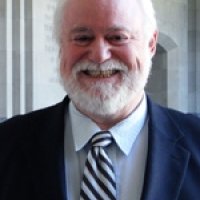
Steve McDonald
Hosted By

Africa Program
The Africa Program works to address the most critical issues facing Africa and US-Africa relations, build mutually beneficial US-Africa relations, and enhance knowledge and understanding about Africa in the United States. The Program achieves its mission through in-depth research and analyses, public discussion, working groups, and briefings that bring together policymakers, practitioners, and subject matter experts to analyze and offer practical options for tackling key challenges in Africa and in US-Africa relations. Read more
Thank you for your interest in this event. Please send any feedback or questions to our Events staff.
